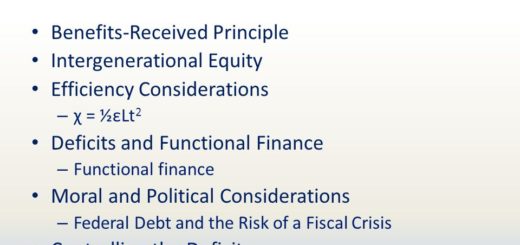Part 2: Taxation and Borrowing Elicit the Same Result
No Difference if a State Taxes or Borrows
As explained in the first part of this 3 part series, the task of funding government has always fallen to the Taxpayer. That to fully understand public finances, one must heed this generally neglected fact. Given that a community of Taxpayers or resident citizens, specifically the aggregate of their assets, incomes, property, and money, funds the whole of government expenditure, one must look at and examine this aggregate in order to answer basic questions in Public Finance.
Imagine that the combined wealth, incomes, assets, property or resident citizens of a community, or what I call ‘That Which Funds Government’ is situated in a box called TWFG, and that the community may comprise a state, municipality, province, or nation
In examining public finances, one easily discovers that it makes no difference whether a community has it government strictly tax or borrow from TWFG to fund public expenditures.
If one should add an asset to TWFG whilst simultaneously creating an equivalent liability or claim against TWFG, then one has not altered TWFG or the aggregate finances of resident citizens. Nor is TWFG altered if one should simultaneously extinguish both an asset and equivalent liability contained within TWFG.
For example, if one should buy a $100,000 home financed fully with a mortgage, one acquires an asset of $100,000, the home, and an equivalent liability, the mortgage debt of $100,000. His net financial position, asset less debt, is unchanged. Selling the home and repaying the debt again leaves the net financial position of the person unchanged.
How do the operations of Taxation and Borrowing affect TWFG? Let us say that a government requires $100 for some public undertaking. It may tax or borrow.
In taxing the sum, $100 flows from TWFG to the government account never to return. Very simple.
Let us say that a government borrows the sum. $100 flows from TWFG to the government account only to return when the created IOU is settled. The only difference is that Borrowing generates paperwork whereas Taxation doesn’t.
In creating a public debt a bond is issued in the amount of $100 by the government. This bonds counts as a claim, liability or public debt against the contents of TWFG. However, it also counts as an asset in TWFG because resident citizens now hold the debt. As the $100 liability claimed against TWFG equals and exactly nullifies the $100 asset contained within TWFG, TWFG is unaltered in the transaction.
$100 leaves TWFG whether the $100 is taxed or borrowed. As the paperwork generated with Borrowing leaves TWFG unaltered, there is no difference between Taxation and Borrowing in outcome. Many will argue that the debt carries interest and the lender must be repaid. Correct. However, if the addition of interest and the repayment of debt again leaves TWFG unaltered, then our claim that it makes no difference if govt. taxes or borrows to fund public expenditures stands.
Let us say the government allots interest on the public debt, say $10 on the $100 debt. The interest increases the public debt or liability claimed against TWFG by $10 to $110. But as the public debt is held by resident citizens in receipt of interest, the contents of TWFG rise by the same amount of $10 to $110. With public debt claimed against TWFG matching exactly the rise in assets held in TWFG through payment of interest, TWFG again remains unaltered in the transaction.
Lastly, the government decides to extinguish the public debt, which stands at $110, by taxing. The government recalls the outstanding bonds of $110 and cancels them. The public debt of $110 claimed against TWFG is extinguished along with the asset or public bonds of $110 held within TWFG. Funds of $110 transfer from taxpayers to lenders, moving from one part of TWFG to another. With equivalent asset and liability of $110 erased and the funds transfer of $110 kept within the bounds of TWFG, TWFG is unaltered in the transaction. Therefore, the reduction of debt bears no perceived benefit for TWFG.
This is a shocking result. On the face of it, whether taxed or borrowed, $100 leaves TWFG to fund public expenditures. And as demonstrated each of the operations in Borrowing: creation of a public debt, addition of interest to the public debt, and erasure of public debt leaves TWFG unaltered. Thus, one must conclude that there is no difference whether a state borrows from or taxes its resident citizens in order to fund public expenditures.
The implications of this result are as incredible as they are profound. Part 3 will make this obvious to all.




1 Response
[…] To Read More On This Step – Click Here […]